In the weeks leading up to the US presidential election, Kacey Smith was feeling hopeful. Smith, who supported Vice President Kamala Harris’ campaign, says she knew it would be a close race between the Democratic nominee and Republican Donald Trump. But as she scrolled TikTok, she believed Harris would be victorious.
Technology
‘Whatever you want Ben’: Inside Ben Horowitz’s cozy relationship with the Las Vegas Police Department
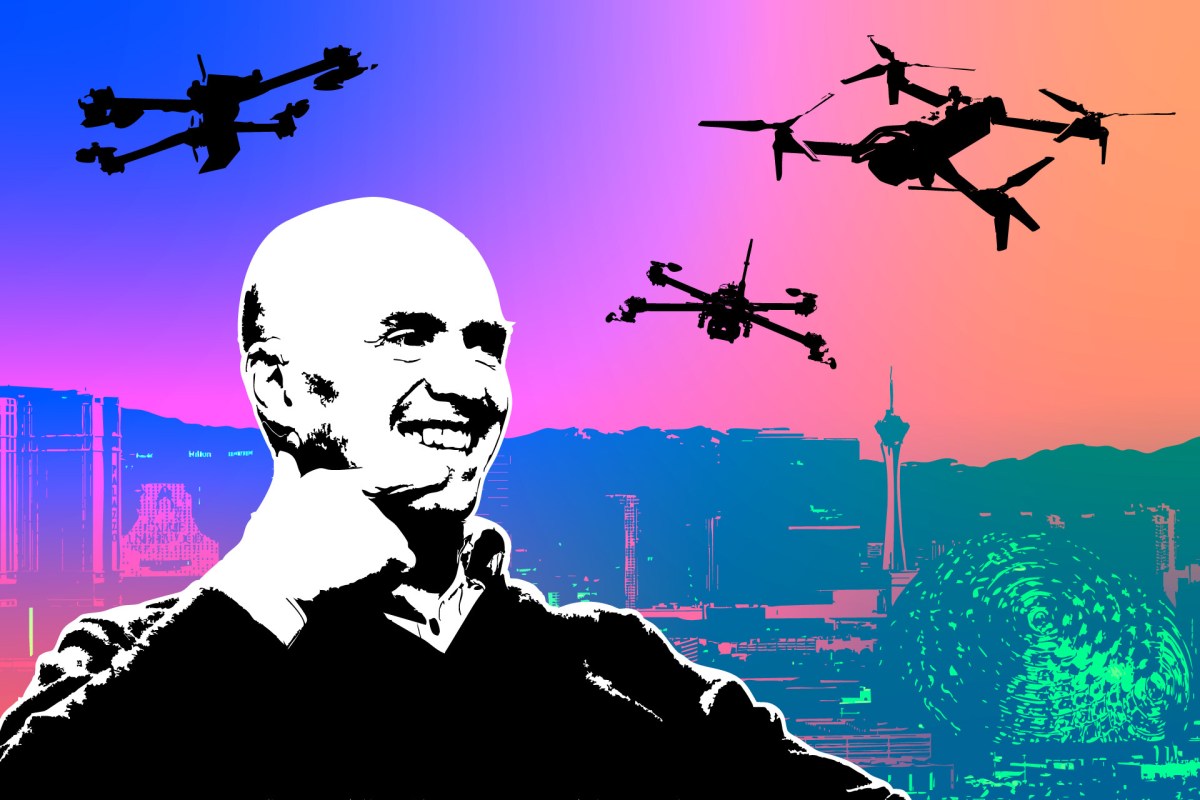
When Skydio, a young maker of drones in San Mateo, California, sent a customer proposal in 2023 to the Las Vegas Metropolitan Police Department, its chief of staff, Mike Gennaro, forwarded the email to VC Ben Horowitz.
“Which deployment are you looking to do?” Horowitz wrote back.
“Whatever you want, Ben,” Gennaro replied, according to emails seen by TechCrunch.
Horowitz then sent money to the Las Vegas Metropolitan Police Department’s (LVMPD) police foundation to purchase Skydio drones for the department.
It was a win-win, seemingly. Skydio was able to tout its relationship with the LVMPD, while the department received a new tool to fight crime. In a blog post detailing the partnership, Skydio praised the LVMPD’s choice to adopt its X10 drones as being “driven by the ambitious vision of making Las Vegas the safest community in America.”
They did not mention Horowitz, despite the fact that the VC’s relationship with the LVMPD runs deeper than just funding the Skydio drones.
The venture capitalist has facilitated communication between the LVMPD and at least six a16z portfolio companies. TechCrunch learned about this relationship after receiving over 100 emails between Horowitz and the department, as well as internal police emails about his donations primarily between January 2023 and July 2024, in a public records request.
In total, the investor has donated at least $7.6 million to fund police department purchases over the last few years, according to a post he published on a16z’s blog in mid-October after learning about TechCrunch’s receipt of the public records. He and his wife Felicia have also paid to expand and improve the LVMPD’s gym, according to the emails and his post.
Horowitz isn’t alone in this approach to supporting police. Soliciting donations to police foundations to cover the cost of specific equipment purchases is an increasingly popular and controversial approach taken by some of the largest departments around the country.
Experts and advocates on police accountability and surveillance told TechCrunch that police foundations bypass the typical procurement process that can include public meetings, a city-approved budget, and a potential bidding period to give competitors a chance.
“It’s horrifying from a good government perspective, from a nonprofit [and] ethics perspective, and just really has become such a major part of how novel police technologies are advertised and marketed,” Albert Fox Cahn, founder and executive director of the Surveillance Technology Oversight Project, said in an interview.
Fox Cahn and others also said donations can set up companies for ongoing contracts where taxpayers foot the bill. And they say it can tilt the playing field. In Skydio’s case, the Las Vegas police department owned products from at least three other drone companies before Horowitz’s donation, a prior public records request revealed.
Horowitz argued in his post that the public sector often has “trouble budgeting” for new strategic technology, so “by donating the technology, I am able to give LVMPD a running start.”
His approach was praised by David Ulevitch, a general partner at a16z, which backed Skydio. “What @bhorowitz and Felicia have done in Vegas is a masterclass in philanthropy and impact,” Ulevitch wrote. “I hope it catches on in cities across America as a model to bring great technology to public safety and bootstrap the process.”
TechCrunch asked Horowitz for an interview and sent a list of questions for this story, but he did not respond. Andreessen Horowitz spokesperson Grace Ellis declined to answer the questions, and said there was “nothing more for Ben to share beyond his blog post.” An unnamed representative of the LVMPD’s public information office said the department “is grateful to the private citizens who provide funding for various projects throughout the department,” and declined to answer further questions.

Paying for Prepared911, Flock Safety and more
For Horowitz’s wife Felicia, California in 2020 was beginning to look too much like her past. The two had lived in the affluent Bay Area town of Atherton, California, for years. But Felicia had grown up outside of Los Angeles, in Compton and Carson, California, where she “saw many of her friends murdered,” Horowitz said in his blog post.
Between Prop. 47, a 2014 California policy that reclassified some felonies as misdemeanors, and politicians’ short-lived pledges to slash police budgets, Felicia felt she was watching her home state deteriorate in real time. “The new policies — defund the police, don’t prosecute crime — are destroying the communities where I grew up,” she was quoted saying in The Wall Street Journal. “If you want to genocide black people, the California policies are a great blueprint.”
Felicia wanted out of California and Horowitz was intrigued by Las Vegas. The city, he told a Substack publication, promised “the Raiders, amazing restaurants, and world class entertainment.”
Horowitz purchased his Las Vegas residence, and his business partner, Marc Andreessen, reportedly bought a $36 million vacant plot nine minutes down the road. By early 2023, the emails show Horowitz had begun making personal suggestions about products to the police department and was soon writing checks. The couple donated $800,000 for new computer terminals and $120,000 for the gym, tossing in money for new ice and cappuccino machines, he wrote in his post.
He also started connecting Vegas police with a16z portfolio companies. In addition to Skydio, he donated $400,000 for the police department to acquire technology from Prepared, an a16z company that uses AI to help with 911 calls, and an unspecified amount for surveillance cameras from Flock Safety, another a16z company. Horowitz also set up introductions for secure communications startup Kodex, and Earnin’, which helps employees access their pay before payday, the emails show.
The LVMPD didn’t just blindly accept his donated technology, though, according to the emails.
Horowitz told Gennaro in an August 2023 email that he would make a donation for the department to acquire technology from Toka, an a16z-backed cybersecurity company. But police leadership had concerns. The startup was slow to provide pricing information and there were questions about whether Toka’s technology would work well with some of LVMPD’s cameras, according to the emails.
LVMPD leadership wanted their internal business and technology governance board to review the tech before even receiving a Toka demo and warned there might be a “lengthy” clearance approval process.
While it is not clear why, a deal was never worked out: A spokesperson for Toka told TechCrunch that LVMPD “has never been a client or user of our products.”
How Horowitz guided the Skydio deal
The Skydio deal wasn’t straightforward either. Horowitz had donated the money for the LVMPD to buy Skydio drones before 2023, according to emails viewed by TechCrunch. Previously, the police force owned a handful of X2 Skydio drones, issued from 2020 to 2022, as well as drones from companies Autel, Brinc, and SkyFront, according to a previous public records request.
In a 2023 email to chief of staff Gennaro, Brad Cupp, then-Las Vegas police sergeant, reflected on the X2 Skydio drones. He wrote that they showed a “tremendous amount of promise,” but “fell short of what we needed operationally.”

In the same email, Cupp wrote that the Skydio team had listened to LVMPD’s feedback, creating a new drone that “has the potential to truly be a game changer,” he wrote. “I’m hoping you will be able to assist upgrading all or part of our fleet of Skydios.”
Gennaro forwarded the message to Horowitz, asking for help. A few months later, Skydio officially announced their new drone, the X10, and sent over a proposal to LVMPD for drones and drone docks — a landing pad for drones stationed throughout the city — in hopes that Horowitz would donate the equipment to the police force.
This potential deal took on a newfound importance after the company stopped selling consumer drones that year, betting its future on government, defense, and law enforcement. This meant all of their inventory would have to meet a higher standard: police drones usually need longer battery lives and better cameras, as well as additional technology like thermal sensors.
It was an expensive bet. According to a 2024 pitch deck prepared by Skydio investor Linse Capital that was viewed by TechCrunch, the drone company forecasted that it could burn through at least $238 million by 2029, based on factors like increased manufacturing and expansion into new industries and geographies. Linse Capital was more pessimistic about Skydio’s needs, according to the deck. It forecasted Skydio could plow through at least $348 million in the next five years on its way to profitability. A Skydio representative said that these figures are not in any Skydio pitch decks and that the firm cannot validate them. Linse Capital declined to comment.
Horowitz, however, expressed surprise at the large scope of Skydio’s proposal to the LVMPD, especially its suggestion to put docks on schools, according to the emails.
“I thought that we just wanted this for the 11 neighborhoods,” Horowitz emailed Gennaro, the “we” referring to the police department and himself, as the one footing the bill. “They bid the schools too. Is that what we asked for?”

Gennaro explained that more drones were necessary in higher-crime neighborhoods, though much of the email was redacted, including his response to putting docks on schools. Gennaro ended the email by deferring to his donor’s judgment.
“We can adjust however you see fit,” he wrote. An unnamed representative of the LVMPD’s public information office said that no drone docks have currently been installed in LVMPD’s jurisdiction.
Three months later, when Horowitz pitched Gennaro on another a16z portfolio company, Kodex, he included a caveat: “If it’s a good idea, I am happy to help, but let’s not let the company know that,” Horowitz emailed. “We don’t need another Skyd.io proposal lol.”
Stacy Wang, Kodex’s head of marketing, said the company had no knowledge of Horowitz funding the LVMPD’s acquisition of a16z portfolio companies’ products. She told TechCrunch that Kodex is “free to use” for all law enforcement agencies.
Horowitz’s increased proximity to the LVMPD has had other ripple effects for the companies he’s invested in. Around the same time that Skydio publicized its partnership with the LVMPD, Sergeant Cupp, who had evangelized the company’s drones internally, left the department for a new gig, according to his LinkedIn profile: Program manager at Skydio.

“You are going to get caught”
Andreessen Horowitz held its 2023 LP Summit — an event for the people who invest in the firm’s funds — in Las Vegas. The city’s sheriff, Kevin McMahill, donning his police uniform, sat onstage between Flock Safety founder Garrett Langley and a16z’s Ulevitch. McMahill couldn’t hold back his glee as he spoke about using a16z-backed technologies.
“Every piece of that technology is the equivalent of three police officers,” he said of Flock’s products, adding: “Bad guys know that when you come to Las Vegas, because of our abilities — technology being at the forefront of it — you are going to get caught.”
McMahill also touted LVMPD’s commitment to transparency during the talk. But he didn’t mention the opaque tool the department used to acquire these technologies: police foundations.
These foundations are often set up as tax-exempt nonprofits, and give private citizens and corporations a way to donate money that can be used to buy things for police departments. Their use has exploded in recent years, with police foundations in major cities like New York, Los Angeles, St. Louis, and Atlanta generating millions of dollars in annual revenue.
Evan Feeney, senior director of campaigns and organizing at Color Of Change, a nonprofit civil rights advocacy organization that has published research on police foundations, called them a “legal loophole” in an interview with TechCrunch. “Billionaires should not be allowed to buy access and influence with law enforcement,” he said.
Transparency, or lack of it, is a primary concern advocates like Feeney have with the use of police foundations.
To wit, Horowitz used his personal foundation to donate $2 million to the Las Vegas police foundation in 2023. But his foundation’s tax filing vaguely described the “purpose” of the donation as “support of police.”
The Las Vegas police foundation, meanwhile, doesn’t publish a full rundown of its donors. And while it maintains a website that lists some of the programs it funds, it does not mention the a16z companies, nor does it say how much money goes to any one effort.
What little they do disclose lags behind the real-world deployment. The most recent public filings for either foundation only cover activity through as late as June 2023.
“Welcome to the wonderful, dystopian land of Police Foundations,” Fox Cahn, the surveillance advocate, said.
Fox Cahn added that, often, the donations can set companies up for lucrative ongoing contracts with the police force, sidestepping competitors. After an initial donation, “they can then try to both sell the [police] on a follow up contract but also then use the fact that [police] are deploying a technology for advertising,” he said.
“It becomes really just impossible for voters — for the public – to hold people accountable,” he said.
Horowitz has justified his involvement with the LVMPD by pointing to dropping crime rates in the city — which he says is happening thanks, in part, to his donations. In his post, he claimed that 911 calls are being answered faster and that, thanks to Flock Safety, 17% more suspects are being arrested.
But Horowitz did not say in the post where he got these statistics, and he declined to answer when TechCrunch asked. The LVMPD referred TechCrunch to its public crime statistics, which do not line up with Horowitz’s figures.
Sheriff McMahill is a believer. At the LP Summit, he recalled a shooting where all they knew was there were two cars with multiple weapons firing. The case seemed hopeless until he used Flock Safety technology, which includes gunshot detection and license plate recognition software, was able to give them more information on the scene and help them to catch the shooters.
“This technology is changing the game,” McMahill declared to the crowd of a16z investors. “We are going to get to a place at some point where it becomes impossible to commit a crime.”
Technology
Pro-Harris TikTok felt safe in an algorithmic bubble — until election day
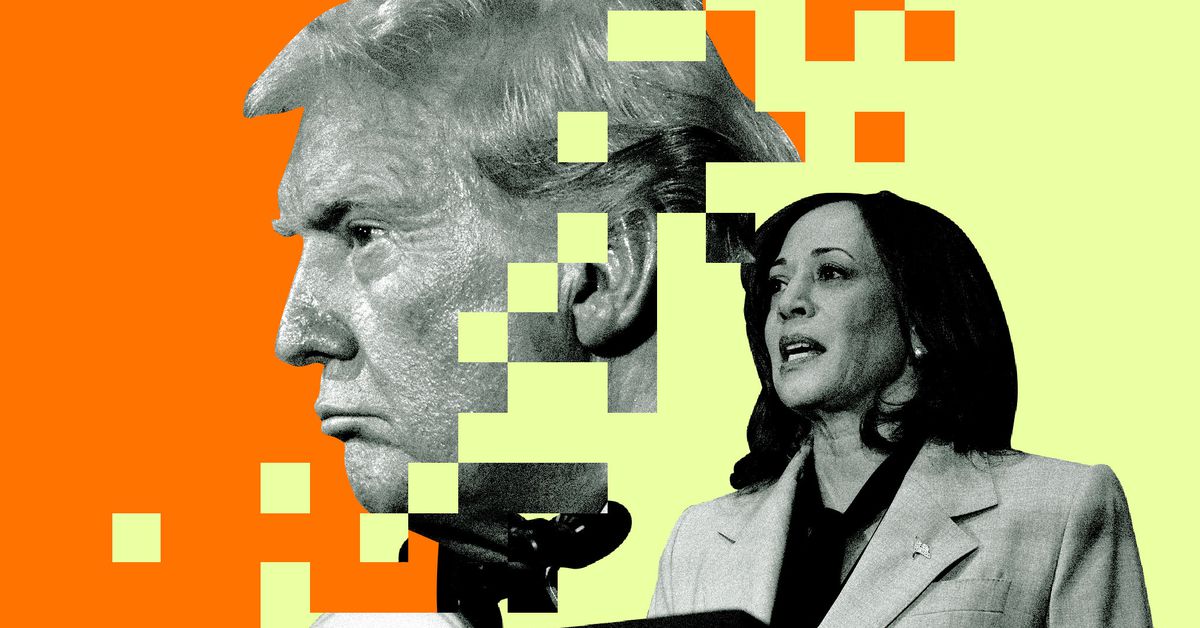
But Election Day approached, and she started to sense red flags in that positivity. She recalls TikTok serving her enthusiasm for reproductive choice with videos encouraging “women’s rights over gas prices” — implying, falsely, she thought, the choice was “either/or.” The rhetoric fit well inside her feed filled with strangers, but as a campaign strategy, it felt limiting and risky. “When I started seeing that messaging play out,” Smith says, “I started getting a little uneasy.” Her fears were borne out: Harris lost the popular vote and Electoral College and conceded the election to President-elect Trump.
Filter bubbles like TikTok’s recommendation algorithm are a common point of concern among tech critics. The feeds can create the impression of a bespoke reality, letting users avoid things they find unpleasant — like the real people in Smith’s life who supported Trump. But while there are frequent complaints that algorithmic feeds could serve users misinformation or lull them into complacency, that’s not exactly what happened here. Voters like Smith understood the facts and the odds. They just underestimated how convincingly something like TikTok’s feed could build a world that didn’t quite exist — and in the wake of Harris’ defeat, they’re mourning its loss, too.
TikTok’s algorithm is hyperpersonalized, like a TV station calibrated exactly to a user’s brain. Its For You page serves content based on what you’ve previously watched or scrolled away from, and breaking out of these recommendations into other circles of the app isn’t easy. It’s a phenomenon political activists must figure out how to adapt to, says Cristina Tzintzún Ramirez, president of progressive youth voter organization NextGen America.
“It not only makes it harder for us to do our job, I think it makes it harder for candidates to do their jobs. It makes it harder for news media to do their job, because now you’re talking about having to inform a public that has so many different sources of information,” she says.
From the onset, the Harris campaign seemed to understand the power of these silos. On TikTok, where the Kamala HQ account has 5.7 million followers, an all-Gen Z team of staffers produced video after video that are, at times, indecipherable to the average person. If you saw a video stringing together clips of Harris saying things like “Donald Trump was fired by 81 million people” and “I have a Glock” with a gentle Aphex Twin song as the soundtrack, would you understand it as “hopecore”? The campaign bet that it didn’t really matter because the TikTok algorithm would carry it to people who did understand it. And at least to some extent, they were right.
Smith, like other TikTok users, knows that the platform recommends her content based on what she watches, saves, comments on, or likes. When pro-Trump content came across her For You page, Smith would purposely not engage and simply scroll away.
“I don’t want my algorithm to think that I’m a Trump supporter, so I just want to scroll up and ignore it,” she says.
In hindsight, Smith wonders if that was the right thing to do or if a mix of different types of political content may have given her more insight into what the other side was saying, doing, and thinking. She likens it to being a liberal or progressive who consumes news from right-wing outlets like Breitbart or Fox News — not because you agree with the material, but because it’s helpful to know what messages are resonating with other types of voters.
The echo chamber effect isn’t limited to politics: we don’t even really know what is popular on TikTok generally. Some of what we see may not be guided by our preferences at all. A report by The Washington Post found that male users — even liberal men — were more likely to be served Trump content on TikTok than women. According to data from Pew Research Center, about 4 in 10 young people regularly get news from TikTok.
TikTok obviously isn’t the only filter bubble out there. Two years into Elon Musk’s purchase of Twitter, now called X, the platform has morphed into a right-wing echo chamber, with content boosted by Musk himself. While TikTok is simply (as far as we know) serving people things they like to sell ads, the slant on X was a deliberate electoral strategy that paid off handsomely for Musk.
“I don’t think we know the full implications of X’s algorithm being rigged to feed us right wing propaganda,” Tzintzún Ramirez of NextGen America says. A recent Washington Post analysis found that right-wing accounts have come to dominate visibility and engagement on X. That includes an algorithmic boost to Musk’s own posts, as the billionaire angles for influence with the incoming administration.
Unlike somebody drinking from Musk’s algorithmic fire hose, a young person deep in a pro-Harris TikTok bubble likely wasn’t being fed racist “great replacement” theory stories or false claims about election fraud. Instead, they were probably seeing videos from some of the hundreds of content creators the Democratic Party worked with. Though the direct impact of influencers on electoral politics is difficult to measure, NextGen America’s own research suggests that influencer content may turn out more first-time voters.
“I should know better than to be fooled”
Alexis Williams is the type of influencer that Democrats were hoping could carry their message to followers. For the last several years, Williams has made content about politics and social issues and attended the Democratic National Convention this year as a content creator, sharing her reflections with 400,000 followers across TikTok and Instagram. Though Harris wasn’t a perfect candidate in Williams’ eyes, she felt Harris would win the presidency in the days leading up to the election.
“As someone with a literal engineering degree, I should know better than to be fooled,” Williams says. She was fed TikToks about a bombshell poll showing Harris ahead in Iowa; young women in Pennsylvania going to the polls in support of Harris; analysis about why it was actually going to be a landslide. Professional polls consistently showed a dead heat between Trump and Harris — but watching TikTok after TikTok, it’s easy to shake off any uncertainty. It was a world full of what’s frequently dubbed “hopium”: media meant to fuel what would, in retrospect, look like unreasonable optimism.
TikTok and the Harris campaign didn’t respond to The Verge’s requests for comment.
For many voters on TikTok, the Kamala HQ content fit in seamlessly with other videos. The campaign used the same trending sound clips and music and a casual way of talking to viewers that seemed, at times, borderline unserious. (The Trump campaign also used popular songs and post formats but didn’t seem as native to the platform — more like a politician’s attempt at TikTok.) But Smith says that even as a Harris supporter, there was a limit to how much of that she could stomach. At a certain point, the trends get old, the songs get overplayed, and the line between a political campaign and everything else on TikTok starts to get blurry. Kamala HQ, Smith says, started to feel like just another brand.
Williams’ confidence began to break down on Election Day, as she walked to a watch party. “I know what I’m seeing on the internet and everything, but I still had [something] in my heart that was like, I don’t see us having another Donald Trump presidency, but I also don’t see a world where a Black woman gets elected for president right now,” she says. She started to wonder whether that much had changed in the eight years since the last female presidential candidate. “You’re seeing all this stuff, and people are getting so excited, but this could be just a mirage.”
Filter bubbles are not a new phenomenon, and voters have a wide range of places to get hyperpartisan news apart from TikTok: blogs, talk radio, podcasts, TV. Whether on the right or the left, there’s a tendency to look around at what you see and assume it’s representative. But the false sense of certainty that TikTok brings is perhaps even more powerful. What we see on the platform is both uncomfortably personal and incredibly global: a video talking about something that happened on our neighborhood block might be followed up by someone across the country voting for the same candidate for the same reasons. It gives an illusion that you are receiving a diverse assortment of content and voices.
As social media algorithms have gotten more precise, our window into their inner workings has gotten even smaller. This summer, Meta shut down CrowdTangle, a research tool used to track viral content on Facebook. A public TikTok feature called Creative Center — which allowed advertisers to measure trending hashtags — was abruptly restricted by the company after reporters used it to report on the Israel-Hamas war. It is harder than ever to understand what’s happening on social media, especially outside of our bubbles.
“As technology gets more advanced and more convincing, our idea of a communal reality might genuinely become archaic,” Williams says. “This election has really taught me that we are very much sucked into these worlds that we create on our phone, when the real world is right in front us.”
Technology
D-Link devices are already being attacked after the company said it would no longer support them


- Earlier this week, researchers discover a 9.2 flaw affecting multiple NAS models
- D-Link says it won’t patch them since they reached end-of-life status
- Crooks are now targeting them with available exploit code
Cybercriminals have begun targeting D-Link NAS devices, recently found to have a critical vulnerability, but which will not be patched due to being at their end of life.
Threat monitoring service Shadowserver recently sounded the alarm in a brief thread posted on X.
It was recently reported multiple versions of D-Link NAS devices were vulnerable to a 9.2-severity flaw that could allow hackers to interfere with the endpoints. However, as the devices had reached their end-of-life, the company said it would not be addressing the flaw, and would not be issuing a patch – instead, advising users to replace the devices with newer models.
Thousand(s) of victims
While the researchers said the exploitation was somewhat difficult since the complexity of an attack was relatively high, they did stress that there is a publicly available exploit out there.
“We have observed D-Link NAS CVE-2024-10914 /cgi-bin/account_mgr.cgi command injection exploitation attempts starting Nov 12th,” the researchers said. “This vuln affects EOL/EOS devices, which should be removed from the Internet.”
They added that in total, there were more than 60,000 endpoints out there that could be compromised, including different models such as DNS-320 Version 1.00,
DNS-320LW Version 1.01.0914.2012, DNS-325 Version 1.01, Version 1.02, and DNS-340L Version 1.08.
Shadowserver also said that it observed roughly 1,100 potential victims, significantly fewer than the 60,000 that were originally claimed.
A NAS device is a dedicated data storage unit connected to a network, allowing multiple users and devices to access and store data centrally. It provides secure file sharing, data backup, and storage, making it ideal for both home and business use. NAS devices are typically easy to set up and scale, offering RAID support and other protections against data loss.
Cybercriminals frequently target NAS devices because they often hold sensitive data, including personal documents, financial information, and business files. By compromising NAS systems, attackers can steal, encrypt, or delete valuable data, with ransomware being a common threat.
Via BleepingComputer
You might also like
Science & Environment
Bizarre test shows light can actually cast its own shadow


The shadow of a laser beam appears as a horizontal line against the blue background
Abrahao et al. (2024)
Light normally makes other objects cast shadows – but with a little help from a ruby, a beam of laser light can cast a shadow of its own.
When two laser beams interact, they don’t clash together like lightsabers in Star Wars, says Raphael Abrahao at Brookhaven National Laboratory in New York. In real life, they will simply pass through each other. Abrahao and his colleagues, however, found a way for one laser beam to block another – and make its shadow appear.
The crucial ingredient was a ruby cube. The researchers hit this cube with a beam of green laser light while illuminating it with a blue laser from the side. As the green light passed through the ruby atoms, it changed their properties in a peculiar way that then affected how they reacted to the blue light.
Instead of letting the blue laser pass through them, the atoms affected by the green light now blocked the blue light, which created a shadow shaped exactly like the green laser beam. Remarkably, the researchers could project the blue light on a screen and see this “shadow of a laser” with the naked eye.
Abrahao says he and his colleagues had a long discussion of whether what they created really qualified as a shadow. Because it moved when they moved the green laser beam, they could see it without any special equipment and they managed to project it onto commonplace objects, like a marker, they ultimately decided in the affirmative.
Historically, understanding shadows has been crucial for understanding what light can do and how we can use it, he says, and this experiment adds an unexpected technique into scientists’ light-manipulation toolbox.
Tomás Chlouba at the University of Erlangen–Nuremberg in Germany says the experiment uses known processes to create a striking visual demonstration of how materials can help control light. The ruby’s interactions with the laser, for instance, are similar to those of materials used in laser eye surgeries, which must be able to respond to laser light by blocking it if it gets dangerously intense.
Topics:
Technology
Meta fined €798m over ‘unfair’ Facebook Marketplace
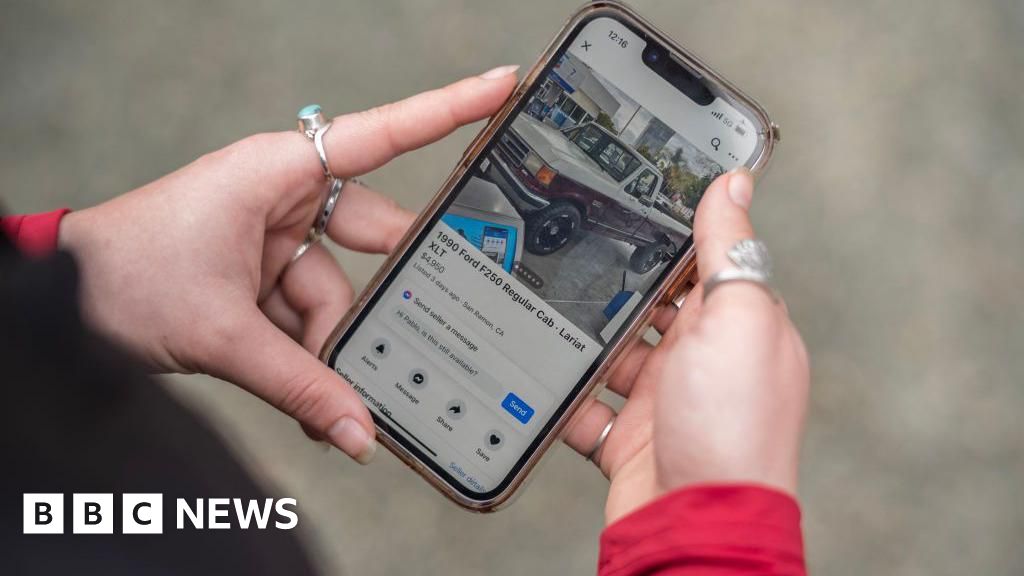
Meta has been fined €798m (£664m) for breaking competition law by embedding Facebook Marketplace within its social network.
The European Commission said this meant alternative classified ads services had faced “unfair trading conditions”, making it harder for them to compete.
In addition to the fine, it has ordered Meta to stop imposing these conditions on other services.
Meta said it rejected the Commission’s findings and would appeal.
EU antitrust head Margrethe Vestager said Facebook had impeded other online classified ads service providers.
“It did so to benefit its own service Facebook Marketplace, thereby giving it advantages that other online classified ads service providers could not match,” she added,
She said Meta “must stop this behaviour”, with the EU asking the firm to “refrain from repeating” the infringement.
Meta said the Commission had provided “no evidence” of harm either to competitors or consumers.
“This decision ignores the market realities, and will only serve to protect incumbent marketplaces from competition.”
The ruling is the result of an investigation which the Commission opened in 2021, after Meta’s rivals complained that Facebook Marketplace gave it an unfair advantage.
Meta has not previously faced a fine from the EU over competition rules – though it was told to pay €110m in 2017 for not handing over correct information when it purchased WhatsApp.
The Irish Data Protection Commissioner has also previously fined Meta more than €1bn over mishandling people’s data when transferring it between Europe and the United States.
And it also had to pay a comparatively tiny £50m in 2021, when the UK’s Competition and Markets Authority (CMA) accused it of deliberately breaking rules over its attempt to acquire Gif-maker Giphy – and ultimately demanded it sell the company altogether.
The decision comes as regulators are taking a firmer stance with big tech companies worldwide, with the US government considering a breakup of Google.
Technology
3 great BritBox shows you should watch in November 2024
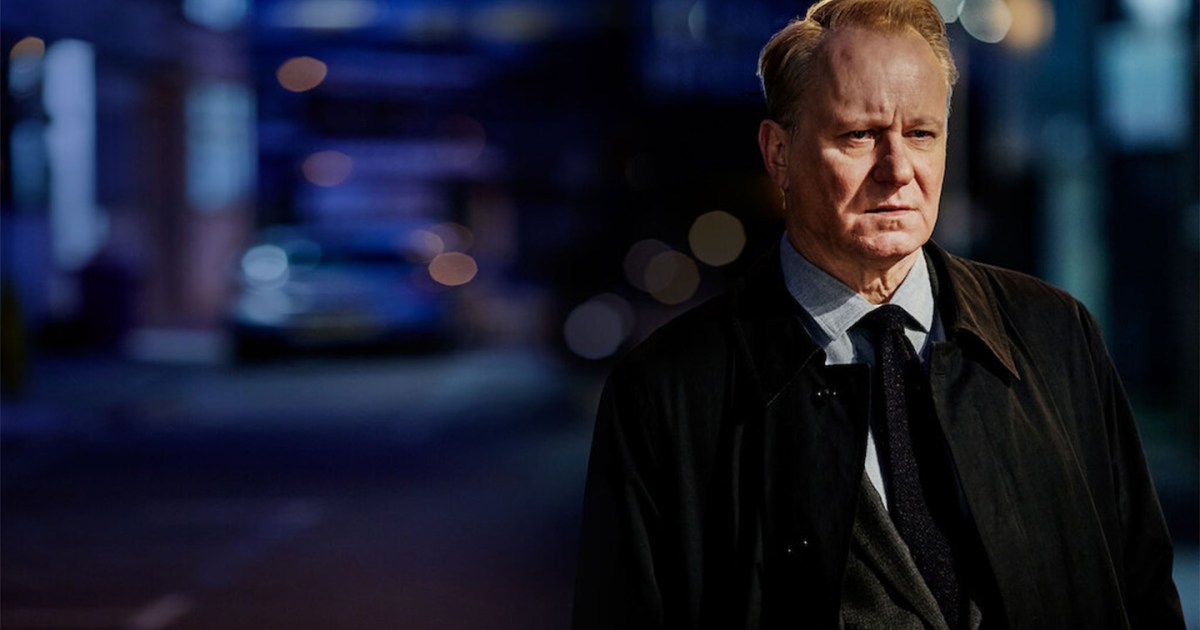

Netflix is great, but you as you peruse it and all the other American streaming options out there, you might find that there’s still something missing from your streaming diet. If you feel that way, you might consider checking out the many shows available on BritBox. The streaming service imports all of the best of what British TV has to offer.
If you’re looking through BritBox and wondering what to watch this month, we’ve got you covered. We’ve pulled together three of the best shows available on BritBox that you can check out in the month of November.
We also have guides to the best movies on Netflix, the best movies on Hulu, the best movies on Amazon Prime Video, the best movies on Max, and the best movies on Disney+.
Wagatha: A Courtroom Drama (2022)
Dramatizing a real-life defamation case, Wagatha tells the story of Vardy v. Rooney, a 2019 case in which Coleen Rooney stated in a social media post that she had been conducting an extended sting operation to discover who was leaking “false stories” about her life to the Sun. She claimed that Rebekah Vardy was behind the leaks, and this dramatization uses actual court transcripts to bring the case to life.
Starring Good Omens actor Michael Sheen, the series is hugely compelling in part because it feels a little bit stranger than any fictional tale could be. It’s social media drama brought to life, and it’s more riveting than that description sounds.
You can watch Wagatha: A Courtroom Drama on BritBox.
River (2015)
The Brits are truly experts at producing exceptional detective series, and River is a perfect example. The series stars Stellan Skarsgård as a brilliant but unstable detective who finds himself haunted by the ghosts of the murder victims he’s investigated. As he investigates the death of one of his colleagues, his increasingly erratic behavior begins to concern his fellow officers.
Skarsgård is excellent in the lead role, and River is compelling in part because it really questions whether this particular detective’s brilliance is worth all the pain that he causes. River is only a single season, but you’ll love every minute of it.
You can watch River on BritBox.
REG (2016)
A brilliant and overtly political series based on a true story, REG follows a father who runs as an anti-war independent candidate in the 2005 parliamentary elections after the death of his son. As he searches for answers for what happened during the war, he becomes a lightning rod for the anger that had been building around the Iraq War since it started.
Released just a decade after the events it depicts, REG is explicitly about the way Tony Blair lied to the people he was supposed to be serving, and led the U.K. into a war that turned out to be a disaster.
You can watch REG on BritBox.
Technology
UGREEN’s Uno MagSafe Power Bank is already down to $34
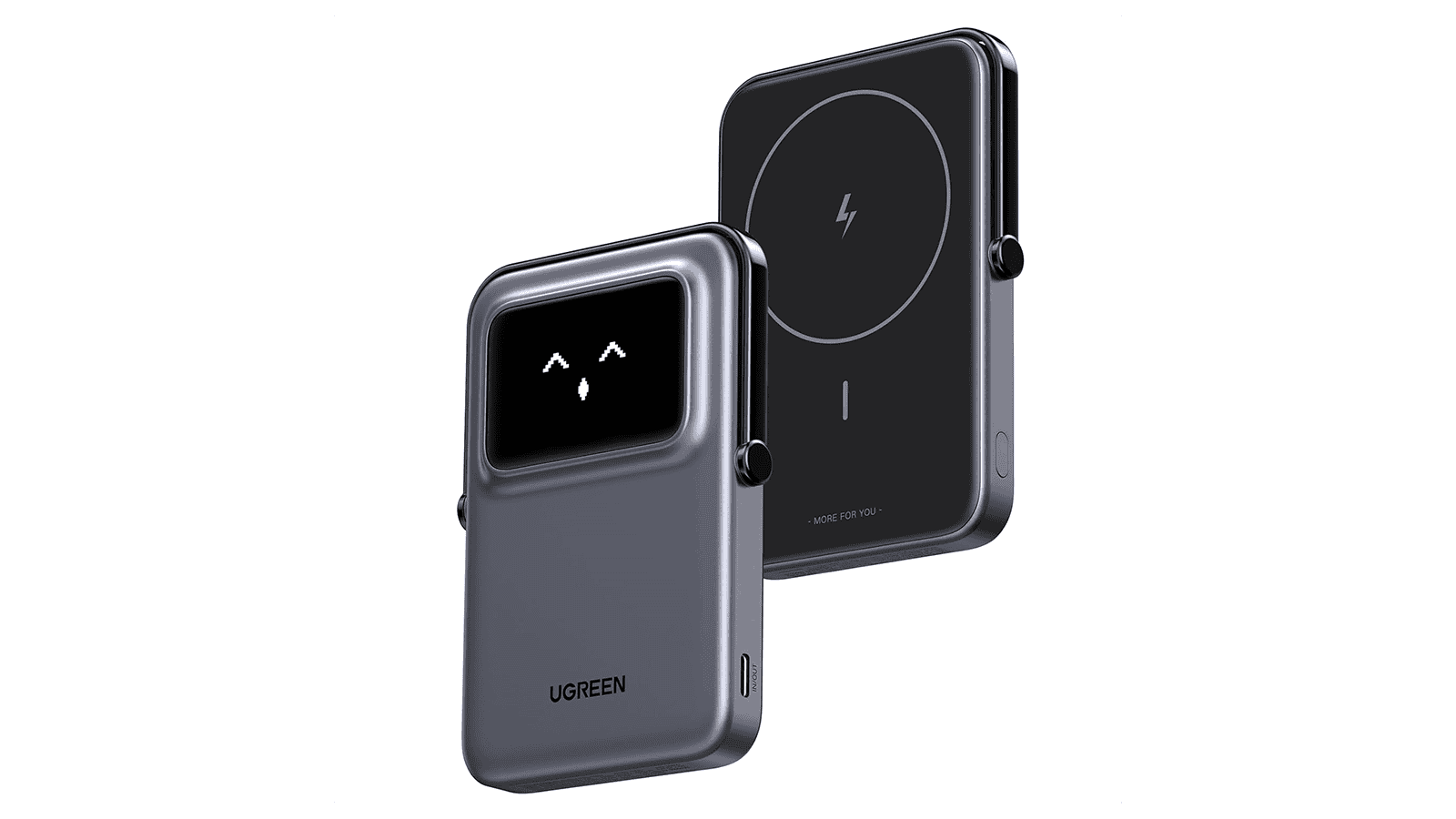
UGREEN showed off its new Uno MagSafe Power Bank with 5,000mAh capacity at IFA back in September, and now it is already discounted, down to just $33.74. This is the first price drop for Uno, and this is a 25% savings. So not too shabby.
This is a MagSafe power bank, but it will still work with many Android smartphones too, especially if you have a MagSafe case for your phone. It attaches to your phone quite easily, and does have a built-in stand, which is really great to have. As someone that’s been traveling a lot this year, having a built-in stand on my battery pack has really come in handy for watching movies on a flight.
On the backside, there is a LED display which will show you when it’s charging, and when it is being charged as well. So you can easily see the charge level on this battery pack. The LED screen might sound like a gimmick for a battery pack, but it is very useful.
At 5,000mAh, this should be able to charge your phone at least once, depending on the size of your phone. Most iPhones get almost an entire charge, but some other larger Android phones like the OnePlus 12 won’t be able to charge at full since the OnePlus 12 has a larger battery.
-

 Science & Environment2 months ago
Science & Environment2 months agoHow to unsnarl a tangle of threads, according to physics
-

 Technology2 months ago
Technology2 months agoWould-be reality TV contestants ‘not looking real’
-

 Technology2 months ago
Technology2 months agoIs sharing your smartphone PIN part of a healthy relationship?
-

 Science & Environment2 months ago
Science & Environment2 months agoHyperelastic gel is one of the stretchiest materials known to science
-

 Science & Environment2 months ago
Science & Environment2 months agoX-rays reveal half-billion-year-old insect ancestor
-

 Science & Environment2 months ago
Science & Environment2 months ago‘Running of the bulls’ festival crowds move like charged particles
-

 Science & Environment2 months ago
Science & Environment2 months agoPhysicists have worked out how to melt any material
-

 MMA1 month ago
MMA1 month ago‘Dirt decision’: Conor McGregor, pros react to Jose Aldo’s razor-thin loss at UFC 307
-

 News1 month ago
News1 month ago‘Blacks for Trump’ and Pennsylvania progressives play for undecided voters
-

 News1 month ago
News1 month agoWoman who died of cancer ‘was misdiagnosed on phone call with GP’
-

 Money1 month ago
Money1 month agoWetherspoons issues update on closures – see the full list of five still at risk and 26 gone for good
-

 Sport1 month ago
Sport1 month agoAaron Ramsdale: Southampton goalkeeper left Arsenal for more game time
-

 Football1 month ago
Football1 month agoRangers & Celtic ready for first SWPL derby showdown
-

 Sport1 month ago
Sport1 month ago2024 ICC Women’s T20 World Cup: Pakistan beat Sri Lanka
-

 Science & Environment2 months ago
Science & Environment2 months agoA new kind of experiment at the Large Hadron Collider could unravel quantum reality
-
Business1 month ago
how UniCredit built its Commerzbank stake
-

 Science & Environment2 months ago
Science & Environment2 months agoMaxwell’s demon charges quantum batteries inside of a quantum computer
-

 Science & Environment2 months ago
Science & Environment2 months agoSunlight-trapping device can generate temperatures over 1000°C
-

 Science & Environment2 months ago
Science & Environment2 months agoLiquid crystals could improve quantum communication devices
-

 Science & Environment2 months ago
Science & Environment2 months agoQuantum forces used to automatically assemble tiny device
-

 Science & Environment2 months ago
Science & Environment2 months agoLaser helps turn an electron into a coil of mass and charge
-

 Technology2 months ago
Technology2 months agoUkraine is using AI to manage the removal of Russian landmines
-
Business1 month ago
Top shale boss says US ‘unusually vulnerable’ to Middle East oil shock
-

 Technology1 month ago
Technology1 month agoSamsung Passkeys will work with Samsung’s smart home devices
-

 MMA1 month ago
MMA1 month agoPereira vs. Rountree prediction: Champ chases legend status
-

 News1 month ago
News1 month agoNavigating the News Void: Opportunities for Revitalization
-

 Science & Environment2 months ago
Science & Environment2 months agoQuantum ‘supersolid’ matter stirred using magnets
-

 Technology2 months ago
Technology2 months agoRussia is building ground-based kamikaze robots out of old hoverboards
-

 Science & Environment2 months ago
Science & Environment2 months agoWhy this is a golden age for life to thrive across the universe
-

 News1 month ago
News1 month agoMassive blasts in Beirut after renewed Israeli air strikes
-

 Technology1 month ago
Technology1 month agoGmail gets redesigned summary cards with more data & features
-

 News1 month ago
News1 month agoCornell is about to deport a student over Palestine activism
-

 Technology1 month ago
Technology1 month agoSingleStore’s BryteFlow acquisition targets data integration
-

 Technology2 months ago
Technology2 months agoMicrophone made of atom-thick graphene could be used in smartphones
-

 Business1 month ago
Business1 month agoWater companies ‘failing to address customers’ concerns’
-

 Sport1 month ago
Sport1 month agoBoxing: World champion Nick Ball set for Liverpool homecoming against Ronny Rios
-

 Sport1 month ago
Sport1 month agoShanghai Masters: Jannik Sinner and Carlos Alcaraz win openers
-

 Entertainment1 month ago
Entertainment1 month agoBruce Springsteen endorses Harris, calls Trump “most dangerous candidate for president in my lifetime”
-

 Money1 month ago
Money1 month agoTiny clue on edge of £1 coin that makes it worth 2500 times its face value – do you have one lurking in your change?
-

 Technology1 month ago
Technology1 month agoEpic Games CEO Tim Sweeney renews blast at ‘gatekeeper’ platform owners
-

 MMA1 month ago
MMA1 month agoPennington vs. Peña pick: Can ex-champ recapture title?
-

 Technology2 months ago
Technology2 months agoMeta has a major opportunity to win the AI hardware race
-

 Science & Environment2 months ago
Science & Environment2 months agoITER: Is the world’s biggest fusion experiment dead after new delay to 2035?
-

 MMA1 month ago
MMA1 month agoDana White’s Contender Series 74 recap, analysis, winner grades
-

 MMA1 month ago
MMA1 month agoKayla Harrison gets involved in nasty war of words with Julianna Pena and Ketlen Vieira
-

 Sport1 month ago
Sport1 month agoAmerica’s Cup: Great Britain qualify for first time since 1964
-

 Technology1 month ago
Technology1 month agoMicrosoft just dropped Drasi, and it could change how we handle big data
-

 Technology1 month ago
Technology1 month agoLG C4 OLED smart TVs hit record-low prices ahead of Prime Day
-

 Sport1 month ago
Sport1 month agoWXV1: Canada 21-8 Ireland – Hosts make it two wins from two
-

 Science & Environment2 months ago
Science & Environment2 months agoNuclear fusion experiment overcomes two key operating hurdles
-

 News2 months ago
News2 months ago▶️ Hamas in the West Bank: Rising Support and Deadly Attacks You Might Not Know About
-

 Technology2 months ago
Technology2 months agoWhy Machines Learn: A clever primer makes sense of what makes AI possible
-

 News1 month ago
News1 month agoHarry vs Sun publisher: ‘Two obdurate but well-resourced armies’
-

 MMA1 month ago
MMA1 month ago‘Uncrowned queen’ Kayla Harrison tastes blood, wants UFC title run
-
Travel1 month ago
World of Hyatt welcomes iconic lifestyle brand in latest partnership
-
Business1 month ago
It feels nothing like ‘fine dining’, but Copenhagen’s Kadeau is a true gift
-

 Football1 month ago
Football1 month ago'Rangers outclassed and outplayed as Hearts stop rot'
-

 Sport1 month ago
Sport1 month agoNew Zealand v England in WXV: Black Ferns not ‘invincible’ before game
-

 Science & Environment2 months ago
Science & Environment2 months agoNerve fibres in the brain could generate quantum entanglement
-

 Technology2 months ago
Technology2 months agoUniversity examiners fail to spot ChatGPT answers in real-world test
-

 Sport1 month ago
Sport1 month agoURC: Munster 23-0 Ospreys – hosts enjoy second win of season
-

 News2 months ago
News2 months agoRwanda restricts funeral sizes following outbreak
-

 Technology1 month ago
Technology1 month agoCheck, Remote, and Gusto discuss the future of work at Disrupt 2024
-

 TV1 month ago
TV1 month agoসারাদেশে দিনব্যাপী বৃষ্টির পূর্বাভাস; সমুদ্রবন্দরে ৩ নম্বর সংকেত | Weather Today | Jamuna TV
-
Business1 month ago
Italy seeks to raise more windfall taxes from companies
-
Business1 month ago
The search for Japan’s ‘lost’ art
-

 Sport1 month ago
Sport1 month agoPremiership Women’s Rugby: Exeter Chiefs boss unhappy with WXV clash
-
Politics1 month ago
‘The night of the living dead’: denial-fuelled Tory conference ends without direction | Conservative conference
-

 Technology1 month ago
Technology1 month agoNintendo’s latest hardware is not the Switch 2
-

 Science & Environment2 months ago
Science & Environment2 months agoA tale of two mysteries: ghostly neutrinos and the proton decay puzzle
-

 MMA1 month ago
MMA1 month agoStephen Thompson expects Joaquin Buckley to wrestle him at UFC 307
-

 Business1 month ago
Business1 month agoWhen to tip and when not to tip
-

 News1 month ago
News1 month agoHull KR 10-8 Warrington Wolves – Robins reach first Super League Grand Final
-

 MMA1 month ago
MMA1 month agoHow to watch Salt Lake City title fights, lineup, odds, more
-

 Money1 month ago
Money1 month agoThe four errors that can stop you getting £300 winter fuel payment as 880,000 miss out – how to avoid them
-

 Sport1 month ago
Sport1 month agoHow India became a Test cricket powerhouse
-

 Sport1 month ago
Sport1 month agoSnooker star Shaun Murphy now hits out at Kyren Wilson after war of words with Mark Allen
-

 Sport1 month ago
Sport1 month agoFans say ‘Moyes is joking, right?’ after his bizarre interview about under-fire Man Utd manager Erik ten Hag goes viral
-

 News1 month ago
News1 month agoCrisis in Congo and Capsizing Boats Mediterranean
-

 TV1 month ago
TV1 month agoTV Patrol Express September 26, 2024
-

 Football1 month ago
Football1 month agoFifa to investigate alleged rule breaches by Israel Football Association
-

 Science & Environment2 months ago
Science & Environment2 months agoA slight curve helps rocks make the biggest splash
-

 News2 months ago
News2 months ago▶️ Media Bias: How They Spin Attack on Hezbollah and Ignore the Reality
-

 Science & Environment2 months ago
Science & Environment2 months agoHow to wrap your mind around the real multiverse
-

 News1 month ago
News1 month agoUK forces involved in response to Iran attacks on Israel
-

 Football1 month ago
Football1 month agoWhy does Prince William support Aston Villa?
-

 News1 month ago
News1 month ago▶ Hamas Spent $1B on Tunnels Instead of Investing in a Future for Gaza’s People
-

 Sport1 month ago
Sport1 month agoPhil Jones: ‘I had to strip everything back – now management is my focus’
-

 Technology1 month ago
Technology1 month agoSamsung Galaxy Tab S10 won’t get monthly security updates
-

 Technology1 month ago
Technology1 month agoMusk faces SEC questions over X takeover
-

 Sport1 month ago
Sport1 month agoChina Open: Carlos Alcaraz recovers to beat Jannik Sinner in dramatic final
-

 Sport1 month ago
Sport1 month agoBukayo Saka left looking ‘so helpless’ in bizarre moment Conor McGregor tries UFC moves on Arsenal star
-

 Sport4 weeks ago
Sport4 weeks agoSunderland boss Regis Le Bris provides Jordan Henderson transfer update 13 years after £20m departure to Liverpool
-

 TV1 month ago
TV1 month agoএই ডিভাইস দিয়ে দেখা যায় পৃথিবীর সব টিভি চ্যানেল! | Smart Tv Box | Independent TV
-
Business1 month ago
Bank of England warns of ‘future stress’ from hedge fund bets against US Treasuries
-

 Technology1 month ago
Technology1 month agoJ.B. Hunt and UP.Labs launch venture lab to build logistics startups
-

 Money1 month ago
Money1 month agoDWP reveals exact date that cold weather payments will start this winter – can you get free cash for your energy bills?
-

 Sport1 month ago
Sport1 month agoSturm Graz: How Austrians ended Red Bull’s title dominance
-

 Money1 month ago
Money1 month agoFive benefits changes the Government could make next month in its Autumn Budget – from PIP to fraud crackdown
-

 MMA1 month ago
MMA1 month ago‘I was fighting on automatic pilot’ at UFC 306

You must be logged in to post a comment Login